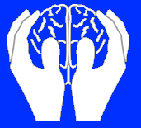Публикуваме тази статия с разрешението на Mind Alive Inc.
The following excerpt is from the Appendices of "Rediscovery of Audio Visual Entrainment Technology" by Dave Siever, C.E.T. copyright 1997
Audio-Visual Entrainment (AVE) Program as a Treatment for Behavior Disorders in a School Setting - Michael Joyce & Dave Siever
In 1997, Michael Joyce, a school psychologist, tested a unique dual frequency AVE session using the Tru-VuTM eyesets with attention deficit disorder and reading challenged students in a primary school in Minnesota. He measured the ADD children for inattention, impulsiveness, response reaction time, and variability (how inconsistent the child's responses were) using a computerized continuous performance test called a TOVA. For two weeks, the students received sessions that stimulated primarily in the alpha band (8 to 12 Hz) after which they were stimulated with dual AVE, comprising high alpha in the right hemisphere and low beta (18 Hz) in the left hemisphere. The control group was given self-esteem classes during the same time as the AVE group received their therapy. All students were instructed to drink water before sessions to help remove neurological byproducts as a result of the metabolism increased by AVE. Figure 1 shows the children's improvements after 10 weeks of treatment. A normal score is 100. A score of 85 represents one standard deviation away from the norm.
Figure 1

These results clearly show a reduction in impulsiveness, inattention, reaction times and variability. Joyce furthered studied reading challenged children to evaluate AVE for improving their reading ability. Joyce selected the students with the poorest marks in the SPALDING reading class for his study. The children were tested on the STAR (Standardized Test for the Assessment of Reading). The reading challenged group showed substantial academic benefits from using AVE.
Figure 2 shows the students' improvements in grade performance for reading. The grade equivalent (GE) ranges from 0.0 to 13 and represents a child's actual grade reading level. For instance, if a child is assessed with a GE of 4.7, this means that the child is reading at a grade 4, seventh month level. Figure 3 shows the percentile rank of the students. The percentile rank (PR) ranges from 1 to 99 and indicates a student's performance compared to his/her peers nationally. For instance, if a child has a PR of 78, then the student is performing at a level which equals or exceeds that of 78% of the children in the same grade, based on the national average.
Figure 2

In addition to their academic improvements, as in reading, parents noted general social improvements as well. The Spalding reading teacher reported her experience as follows, "during the time students participated in the AVE program, behavior began to change. Brains were engaged, and students were more alert. And they began actively participating in the teacher-student dialogue portion of the class."








